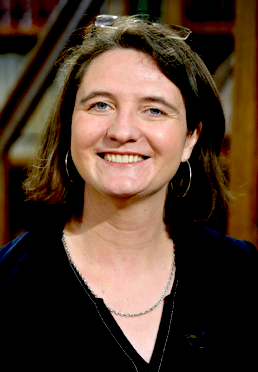
Prof. Sara Irina Fabrikant
University of Zurich
Dr. Sara Irina Fabrikant is a Professor of Geography, leading the Geographic Information Visualization and Analysis (GIVA) group at the GIScience Center of the Geography Department at the University of Zurich (UZH), Switzerland. She holds a PhD in Geography from the University of Colorado at Boulder (USA). Her research and teaching interests lie in geographic information visualization and geovisual analytics, GIScience and cognition, graphical user interface design and evaluation, including dynamic cartography. She is a Co-Director of the UZH Digital Society Initiative and a member of the Swiss Science Council. She served the International Cartographic Association as a vice president, and was involved in co-chairing the program committees of AGILE 2008, GIScience 2010, and COSIT 2015.
Smart cartography for wise navigation assistance
We daily make time critical and societally relevant decisions on the go, using smart, mobile assistive geographic information displays (GIDs). How should the GIDs of the future look like, to avoid what others have coined “the technological infantilizing of society”, that is, the reduction of our capacity to still make wise decisions without smart technological assistance?
I will highlight ongoing empirical research on human and context responsive GIDs used in the lab and in the wild, capitalizing on ambulatory human behaviour sensing methods (i.e., eye tracking, galvanic skin response, and EEG measurements). Based on collected empirical evidence and supported by cognition and vision theories we are guiding the process of designing smart human, task, and context responsive geographic information interfaces supporting wise navigation decisions of smart urban wayfinders.

Prof. Steve Franconeri
Northwestern University
Steve Franconeri is a Professor of Psychology at Northwestern, and Director of the Northwestern Cognitive Science Program. He studies Visuospatial Thinking, especially within Information Visualization and Education, as well as Visual Communication.
Thinking with Visualizations, Fast and Slow
In the natural world, the visual system can identify objects, faces, and scenes rapidly and in parallel. But in the artificial worlds of data visualizations, maps, and diagrams, the more critical task is to extract spatial and magnitude relations among objects. This process is far slower and can be daunting for both students and adults. I’ll use interactive visual tasks to show how relational processing can challenge our visual system, and will suggest that visual relations are limited by a serial representation similar to a sentence. Understanding these constraints leads to design guidelines and instruction techniques for information visualizations, from public data communication to STEM Education.

Dr. Laure Rondi-Reig
CNRS Research Director,
Sorbonne University
Dr. Laure Rondi-Reig currently works at the Neurosciences Paris Seine-IBPS, Sorbonne University. Laure does research in Neuroscience. Her current projects are ‘Cerebellum’ and ‘Memory and Navigation’.
Cerebellar networks of spatial cognition in rodents and humans
The ability to maintain a sense of direction and location while moving in one’s environment is fundamental for our daily travels. Self-motion perception is a demanding problem in sensory integration, requiring the neural combination of visual signals (e.g., optic flow), vestibular signals regarding head motion, as well as somatosensory and proprioceptive cues. The cerebellum is adequately wired to combine the diversity of sensory signals to be monitored during self-motion and to fuel the navigation circuits. I will first describe the different pathways by which the cerebellum anatomically projects to the navigation networks. I will then illustrate how distinct cerebellar mechanisms are involved in the stability of place and direction coding depending on the availability of external sensory conditions. These results put forward a role for the cerebellum in mediating a stable hippocampal representation of place and a stable and unitary thalamo-cortical representation of direction.

